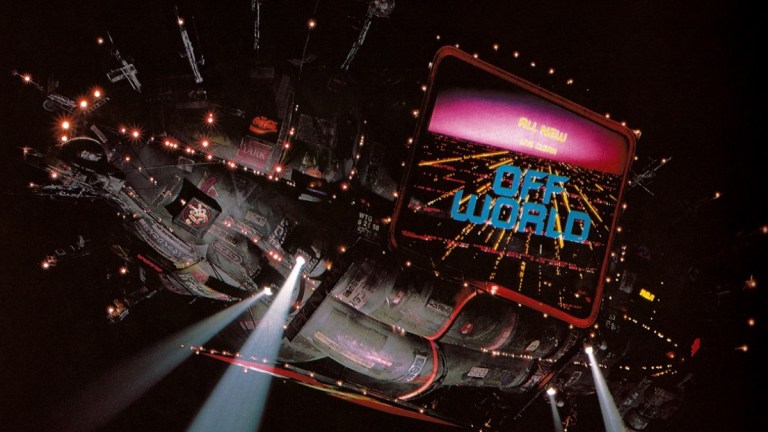Could Blade Runner 2099 Finally Take the Franchise to Space?
Is it finally time for Blade Runner to go “Off-world?”

1982’s Blade Runner is often regarded as the greatest earthbound science fiction film of all time. The Ridley Scott and Harrison Ford cult classic certainly makes a very good case.
While you can argue for all sorts of great sci-fi movies without space travel (Back to the Future?), it’s tough to find a grounded sci-fi movie quite like Blade Runner in which space travel exists but is never actually depicted. In other words, although space travel is essential to the story of Blade Runner and its fugitive Replicants, we never actually witness it on screen. But could all of that change? Could a new iteration of live-action Blade Runner finally take us to space?
Deadline reports that Ridley Scott’s pitch for a sequel series called Blade Runner 2099 has been picked up by Amazon, with Silka Luisa (Shining Girls) set up as writer and executive producer. The report notes that the project comes from Alcon Entertainment, which also happened to produce the space-set series The Expanse for Amazon. That latter detail isn’t really relevant, exactly, unless of course you put on a tinfoil hat constructed by Replicants and think maybe, just maybe, Amazon wants another hit sci-fi series that takes space travel seriously, which is exactly the kind of thing Scott knows how to do well.
Over on HBO Max, Scott set into motion Raised by Wolves, a series that arguably inverts the “Off-world” story of artificial lifeforms by putting the “robots” of that world in a totally different position of power. What if Raised by Wolves was just a taste of where the “Replicants in space” storyline can go? In ’82, the Blade Runner universe all but laid out its space-faring future.
At the end of the first film, Roy Batty’s famous soliloquy even cinches the notion that nearly everything that most Replicants experience happens Off-world. When Roy says, “I’ve seen things you people wouldn’t believe…” all of the stuff he describes are extraterrestrial. Roy has been to space, while Deckard and most of the other major characters in Blade Runner are stuck on a planet most humans wish to leave.
In the original Philip K. Dick novel — Do Androids Dream of Electric Sheep? — the idea that people are moving “Off-world” is hammered home even more clearly than it is in the film. Various apartment buildings are now essentially empty because of the exciting opportunities offered in space. You get the sense that most of the human race has moved on from their home planet by this point, making Deckard’s desire to own a real-life animal, a status symbol on a largely undesirable Earth, feel all the more tragic and pathetic.
Although we never leave Earth in either Blade Runner or Blade Runner 2049, the very nature of the story requires us to understand that the implicit illegality of Replicants on Earth is the direct result of their being legal “Off-world.” As stated in the first film, right at the beginning, “Replicants were used Off-world as slave labor, in the hazardous exploration and colonization of other planets.” In other words, interplanetary travel is a huge fact-of-life in the Blade Runner future.
Beyond expanding the world-building, or further validating Scott’s interest in robots in space (see also, Alien, Prometheus, et al.), there’s another good argument for taking Blade Runner 2099 into space. Up until now, all onscreen iterations of Blade Runner have essentially relied on the exact same setting and aesthetics. Even the recent twisty animated series, Blade Runner: Black Lotus, mostly keeps things focused on a dystopian Los Angeles, which is true of a big chunk of Blade Runner 2049, too. And, even though Denis Villeneuve’s film struck out to a dusty, abandoned Las Vegas, there’s still a very specific kind of scope we’re dealing with here. But why?
There’s nothing that says the universe of Blade Runner has to be stuck in a rain swept American city. The noir-cyberpunk vibe of Blade Runner could easily be reproduced outside of the confines of Earth, on one of the space colonies teased in the original film, particularly if this next series is set roughly five decades after where we left Deckard and Agent K.
Because of when the original film was made, the “present” of Blade Runner is starting to look a tiny bit like the past. Jumping so far ahead for the next story could, for a lack of a better word, help the franchise feel “futuristic” again. If part of that cyberpunk futurism includes actual space travel, we should finally get to see what that future looks like.
In other words, if you’re doing a new Blade Runner, and it’s set in the “future,” it seems like it’s about time that we get to see those things we wouldn’t believe. The Tannhäuser Gate. C-beams glittering in the dark. Attack ships on fire off the shoulder of Orion. Let’s see it all!
Blade Runner 2099 is still in development and isn’t expected to air until late 2023 at the very earliest.
